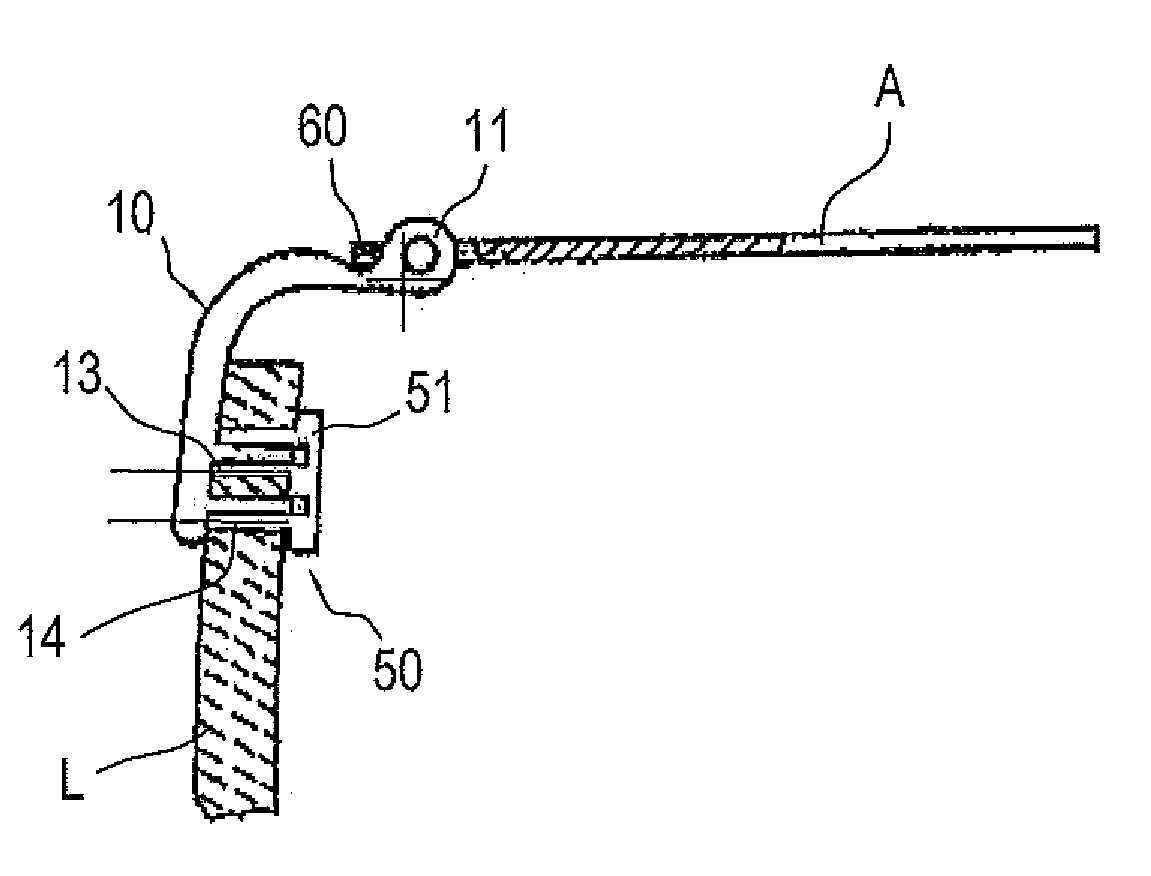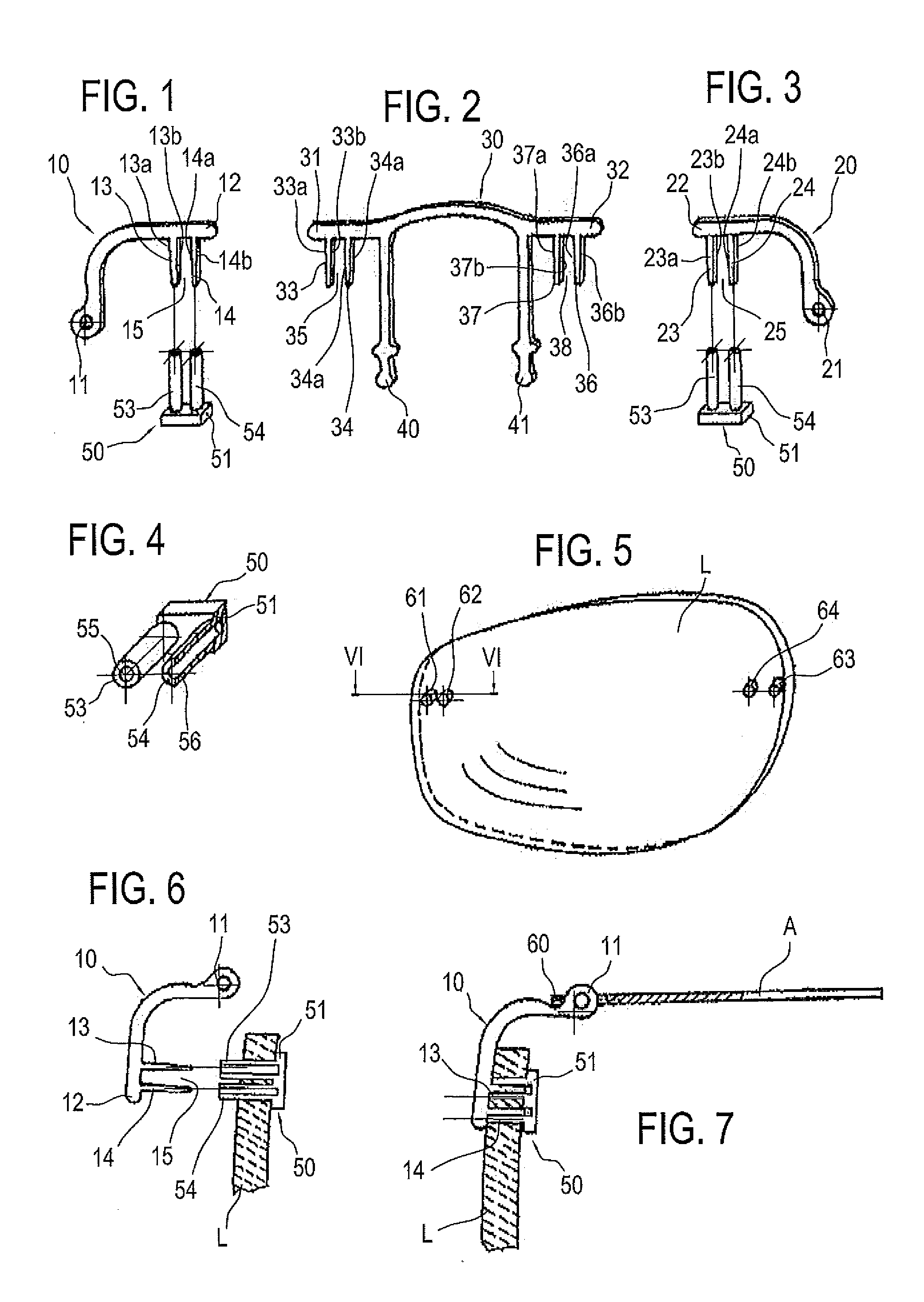System for fastening bridge and temples in the manufacture of eyeglasses
a technology of fastening system and eyeglasses, which is applied in the direction of spectacles/goggles, instruments, spectacles/goggles, etc., can solve the problems of low mechanical strength, affecting the working time and conditions, eyeglasses cost, and relatively insecure fastening, etc., to achieve stable and secure manner, simple and quick, and easy assembly
- Summary
- Abstract
- Description
- Claims
- Application Information
AI Technical Summary
Benefits of technology
Problems solved by technology
Method used
Image
Examples
Embodiment Construction
[0075]In all the accompanying drawings, the same parts are denoted or intended to be denoted by the same reference numbers.
[0076]According to the solution of the invention as illustrated in the drawings, a pair of mutually opposed fronts or end pieces 10 and 20 and a central bridge 30 for mounting eyeglass lenses L can be formed from a single flat sheet of a suitable metal alloy, for example by die forming or punching, the sheet being uniform in thickness and constant in the quality of the material.
[0077]The end piece or hinge element 10 has an end with an eye 11, to be associated with the hinge end 60 of the temple A, while its opposite end 12, directed towards the lens, is in the shape of a fork, consisting of a pair of internal teeth or prongs 13-14, with a space or centre distance 15 between them.
[0078]Similarly, the end piece or hinge element 20 has an end with an eye 21, to be associated with the hinge end 60 of the opposite eyeglass temple A, while its opposite end 22, direct...
PUM
| Property | Measurement | Unit |
|---|---|---|
| Angle | aaaaa | aaaaa |
| Thickness | aaaaa | aaaaa |
| Shape | aaaaa | aaaaa |
Abstract
Description
Claims
Application Information
 Login to View More
Login to View More - R&D
- Intellectual Property
- Life Sciences
- Materials
- Tech Scout
- Unparalleled Data Quality
- Higher Quality Content
- 60% Fewer Hallucinations
Browse by: Latest US Patents, China's latest patents, Technical Efficacy Thesaurus, Application Domain, Technology Topic, Popular Technical Reports.
© 2025 PatSnap. All rights reserved.Legal|Privacy policy|Modern Slavery Act Transparency Statement|Sitemap|About US| Contact US: help@patsnap.com



